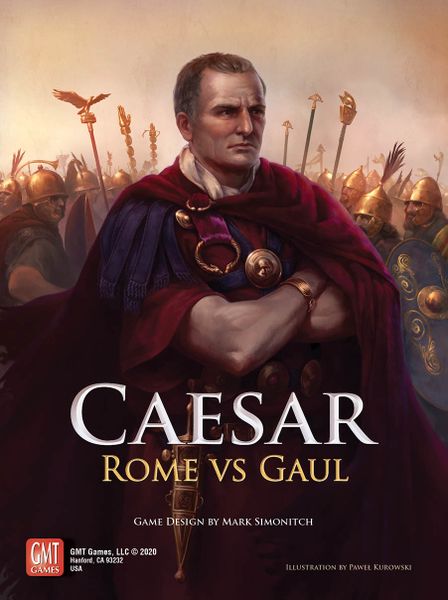Caesar: Rome vs. Gaul (2020) Board Game
Caesar: Rome vs. Gaul is a two-player board game that takes place during Julius Caesar’s Gallic Wars. Players take on the roles of either Caesar’s legions or the Gallic tribes, engaging in strategic battles and political maneuvering to control Gaul. The game is known for its historical accuracy and detailed simulation of the conflict.
Game Components of Caesar: Rome vs. Gaul
How To Setup Caesar: Rome vs. Gaul
To set up the game, players first place the game board, which depicts the regions of Gaul, Germania, and Britannia. Each player selects their respective cards and army units. The Roman player starts with a concentrated force, while the Gaulic player begins with dispersed and less united tribes. Influence tokens are distributed according to the starting conditions. Players then draw their initial hand of cards, which will drive the actions and events throughout the game.
Gameplay Mechanics and Game Objective
Player Experience
Playing Caesar: Rome vs. Gaul is a dynamic and challenging experience for both players. The Roman player faces immense pressure to replicate Caesar’s historical successes, while the Gaulic player must employ cunning and strategic guerrilla warfare to counter the Roman might. The game is easy to learn but requires deep strategic thinking to master. The balance of the game favors the Gauls mechanically, making the Roman victory a tight and hard-won achievement.
Pros
Cons
Personal Thoughts on Caesar: Rome vs. Gaul
Caesar: Rome vs. Gaul is ideal for players who appreciate historical strategy and the challenge of replicating one of history’s greatest military campaigns. It is particularly suited for those who enjoy card-driven games and are looking for a game that balances depth with ease of learning. The game’s unique approach to balance ensures that both players have a fun and exciting experience, with the Roman player facing the daunting task of living up to Caesar’s legend and the Gaulic player using cunning and strategy to resist the Roman conquest.
We are supported by our audience. When you purchase through links on our site, we may earn an affiliate commission, at no extra cost for you. Learn more.

